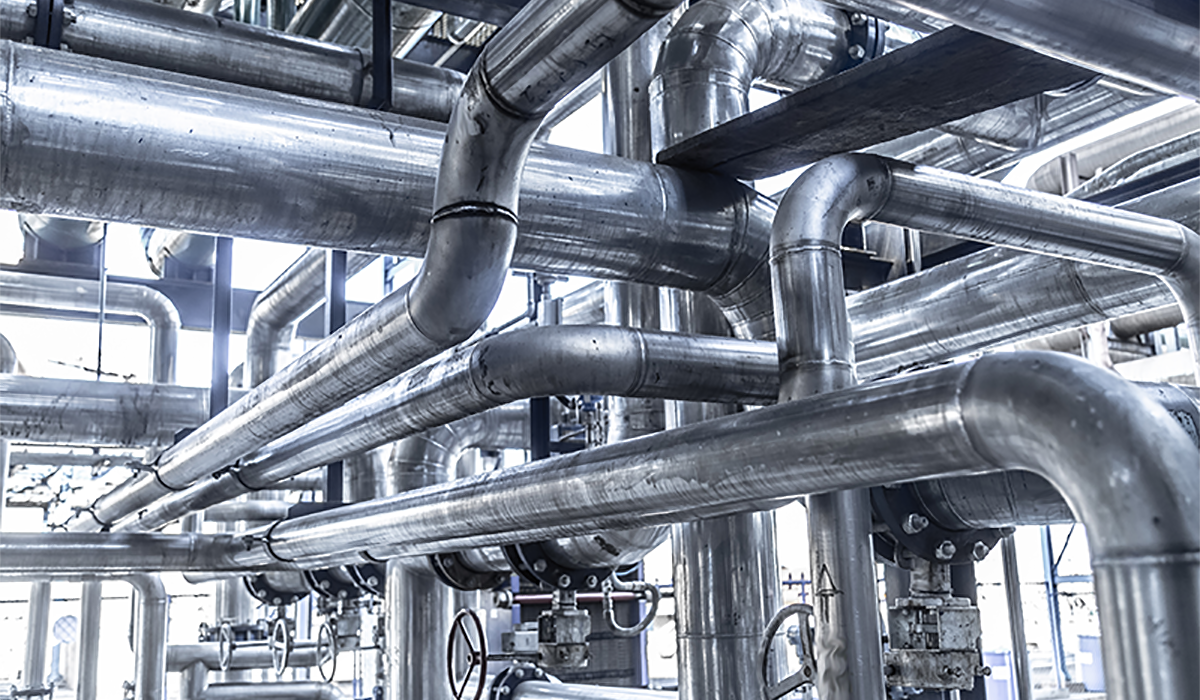
When pipe supports give way, it can cause massive damage to your pipe system. After all, pipe supports have to control thousands of pounds, high pressure, and roaring liquids.
Want to avoid disaster before it strikes your piping system? Start by pinpointing those common pipe failure causes that have plagued piping systems in the past. In this article, we uncover four common pipe support failures and how you can avoid them.
1. Rubber Buffers
In an attempt to avoid metal-on-metal contact, engineers will sometimes install rubber buffers between pipes and beams. In these instances, they’ve identified a very real problem in metal-to-metal contact, but the solution can cause pipe support failures.
Why?
Rubber buffers tend to be porous, and they can harbor moisture or microbes. These bacteria traps are a launchpad for corrosion. When pipes or pipe supports sit on rubber buffers, the rubber can corrode them and cause them to collapse.
The better solution?
An effective way to prevent metal-on-metal contact more safely is by using wear pads, composite pipe shoes, or slide plates. These isolators are corrosion-proof and add a durable buffer between your metal pipes and metal surfaces.
2. Metallic Guides Without Lining
When used right, pipe supports can reinforce pipes and control movement. However, in some cases, using metallic guides without a lining can lead to pipe support failures and ruptured pipes. There are a few reasons metal guides without linings can cause failures:
Galvanic Corrosion
If your pipes and pipe supports are made up of dissimilar metals, it can create an electrochemical reaction called galvanic corrosion. This nasty form of corrosion can eat away pipes and spread rust throughout your piping system.
Corrosion Cells
When metal rubs on metal, the movement can create little holes in the surface of your pipes or supports. Those little divots can house microbes and cause crevice corrosion. Ultimately, that can cause pipes or pipe supports to fail altogether.
Metal-to-Metal Friction
In addition to causing corrosion, when metal collides, it can wear down surfaces. Again, as your pipe or support’s surface weakens, it is in danger of rupturing.
Pinning Pipes Down
In some cases, pinning your pipe down with a pipe restraint can concentrate pressure on a single spot. When your pipe vibrates, the bare restraint can slice into your pipe, or it can snap under high pressure.
Luckily, there are a few ways to prevent this damage. Here are three options:
1. Add linings.
Linings add a nonmetallic buffer between your pipe’s metal and metallic pipe supports. Some linings, such as those in APP’s VibraTek Hold Down Clamps, will also dampen vibrations to protect both the pipe support and the pipe surface.
2. Use composite pipe supports.
By using composite supports, such as ProTek or CryoTek Pipe Shoes, you keep metals separate and free from corrosion.
3. Include a coating.
Some guides, such as the ProTek U-Bolt, include a thermoplastic coating at the point of contact with pipes. That way, your pipes move more naturally and glide along a nonmetallic surface.
3. Composite Mats or Pads Under Pipes
You may be thinking, “OK, rubber buffers are no good. Why not throw down a composite mat to prevent metal-on-metal contact?” Again, piping pros who choose this option have pinpointed the right problem—but it’s the wrong solution.
Why?
Grit, dirt, and grime can get caught between your pipe and your composite sheet, essentially transforming your composite pad into a sheet of sandpaper. When your pipe moves, it can grind away your pipe’s surface. It also leaves room for mycobacteria or moisture to pool between your pad and your pipe. These substances can cause corrosion, damaging both your pipe and pipe support.
You can avoid this pipe support failure and stop metal-to-metal contact by using a pipe support that fits directly to your pipe, such as the ProTek Wear Pad. These composite pads fit snugly to your pipe, allowing the pads to move with your pipe and seal off the pipe’s surface from corrosive substances.
4. Sloppy Pipe Spacing
Another common cause of pipe support failures is support installation that doesn’t ensure the proper spacing. When pipe supports aren’t spread out properly, pipes can sag or droop. This can lead to pooling corrosion and even cause pipes to collapse.
The obvious solution is to pay attention to your pipe support spacing and to follow product specifications closely. Another option is to consider adjustable pipe hangers. Products such as rods and hangers support suspended piping while letting you make adjustments to avoid saggy pipes.
Find the Best Support for Your Pipe System
Want to learn which pipe supports will protect your pipes best and increase your piping system’s performance? Download our Complete Guide to Pipe Shoes and learn the ins and outs to these pipe supports.






